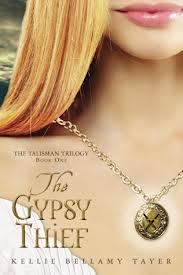“In children’s literature, in Britain perhaps even more than in the United States, Romanies turn up with some frequency — never as characters who happen incidentally also to be Gypsies, but because they are Gypsies, and because they serve a specific purpose. This purpose has, broadly speaking, three manifestations: the Gypsy as liar and thief either of property or (especially) of non-Romani children; the Gypsy as witch or caster of spells; and the Gypsy as romantic figure. In order to understand why the Romani should find him or herself in this mainly unflattering role, it is necessary first of all to understand what a Gypsy really is, and what historical circumstances have led to the emergence of so deeply-rooted a fictional image.” –Hancock, “The Origin and Function of the Gypsy Image in Children’s Literature”
For this week’s blog post, read Ian Hancock’s The Origin and Function of the Gypsy Image in Children’s Literature. While the article deals specifically with children’s literature, we will be using his theory of “function” to frame our research paper about the function of Romani characters in film. Once you chose your film, first you need to determine whether or not the Romani characters are “necessarily” Gypsy or “incidentally.” Hancock shows that when a character is “necessarily” Gypsy, his or her role in the narrative fulfills a purpose or function that rests on Gypsy stereotypes. This brings us back to our fiction unit and the complex character stories we wrote–the best way to avoid reductive and/or dehumanizing stereotypes about any group of people is to allow the characters to be complex.
We see “functional” characters of different ethnicities in a lot of different stories, and though women are technically the majority, population-wise, in a patriarchal culture such as ours, women are frequently represented as functional characters as well. In class, we’ve discussed some stereotypes about men and women and the ways that they are limiting. While men are made victims of gender stereotyping by the media, there are dramatically more men represented than women in film, fiction, TV, etc., in general and as central and complex characters. In mainstream media, women and minorities often appear as token characters in an all white, straight male cast, and are often stereotypical.
So for the blog post, in addition to Hancock’s article, watch these videos and take a look at the chart below:
Tokenism, tropes, and the Smurfette Principle
The Bechdel Test
The chart: Women with speaking roles are more likely to be naked?
Chose one question to answer using specific examples and supporting your points with examples from Hancock, the Feminist Frequency videos, and the chart.
1. How do industry inequality and gender bias in awards relate to the portrayal of women in films and what does the Bechdel Test do to measure that portrayal? How could this help us understand and gauge Romani representation and portrayal in the media?
2. What are tokensism, the Smurfette Principle, and “necessarily Gypsy characters” (or necessarily male, female, Black, Asian, etc. characters) and why are they especially problematic in children’s literature/films?


